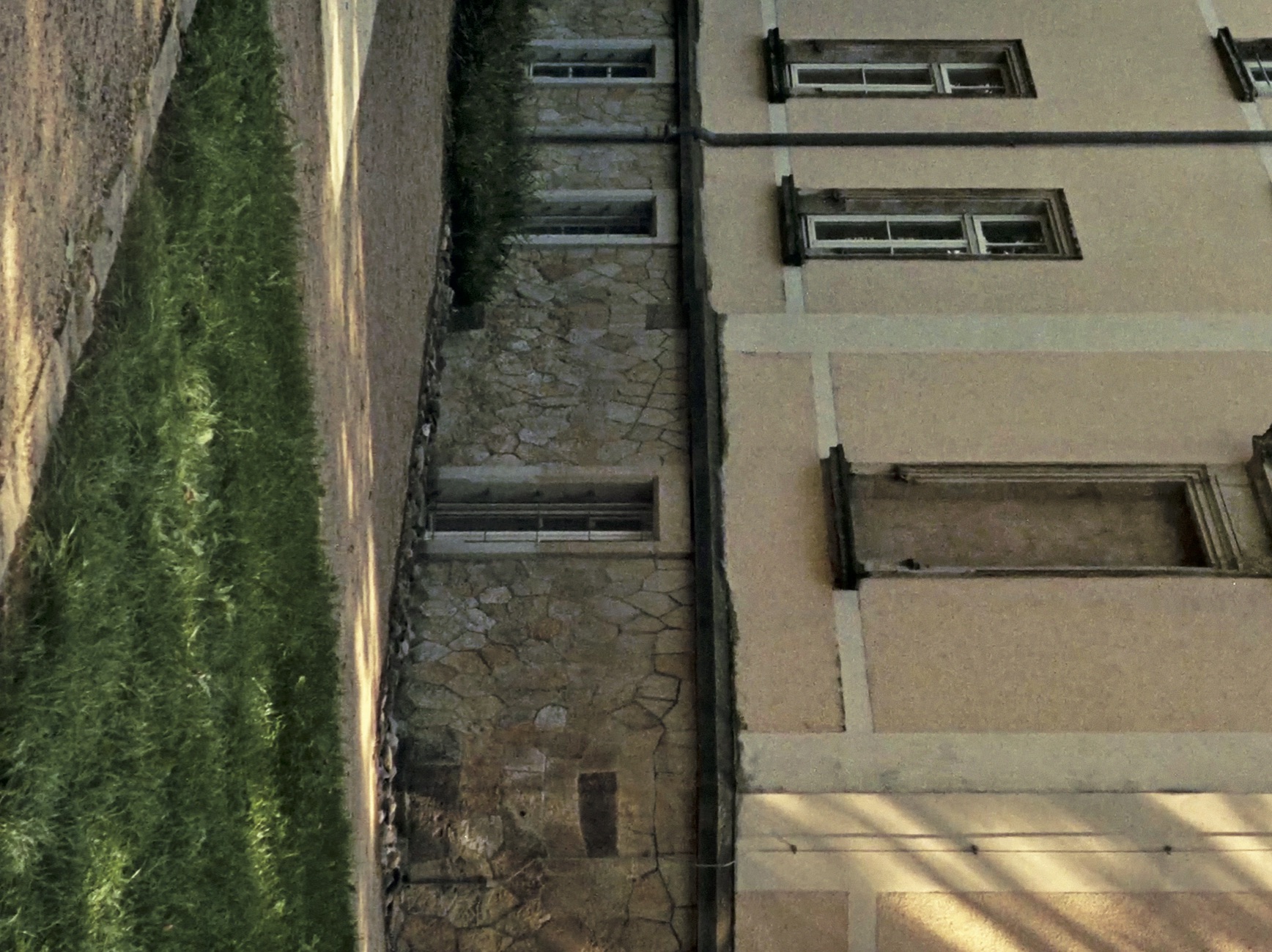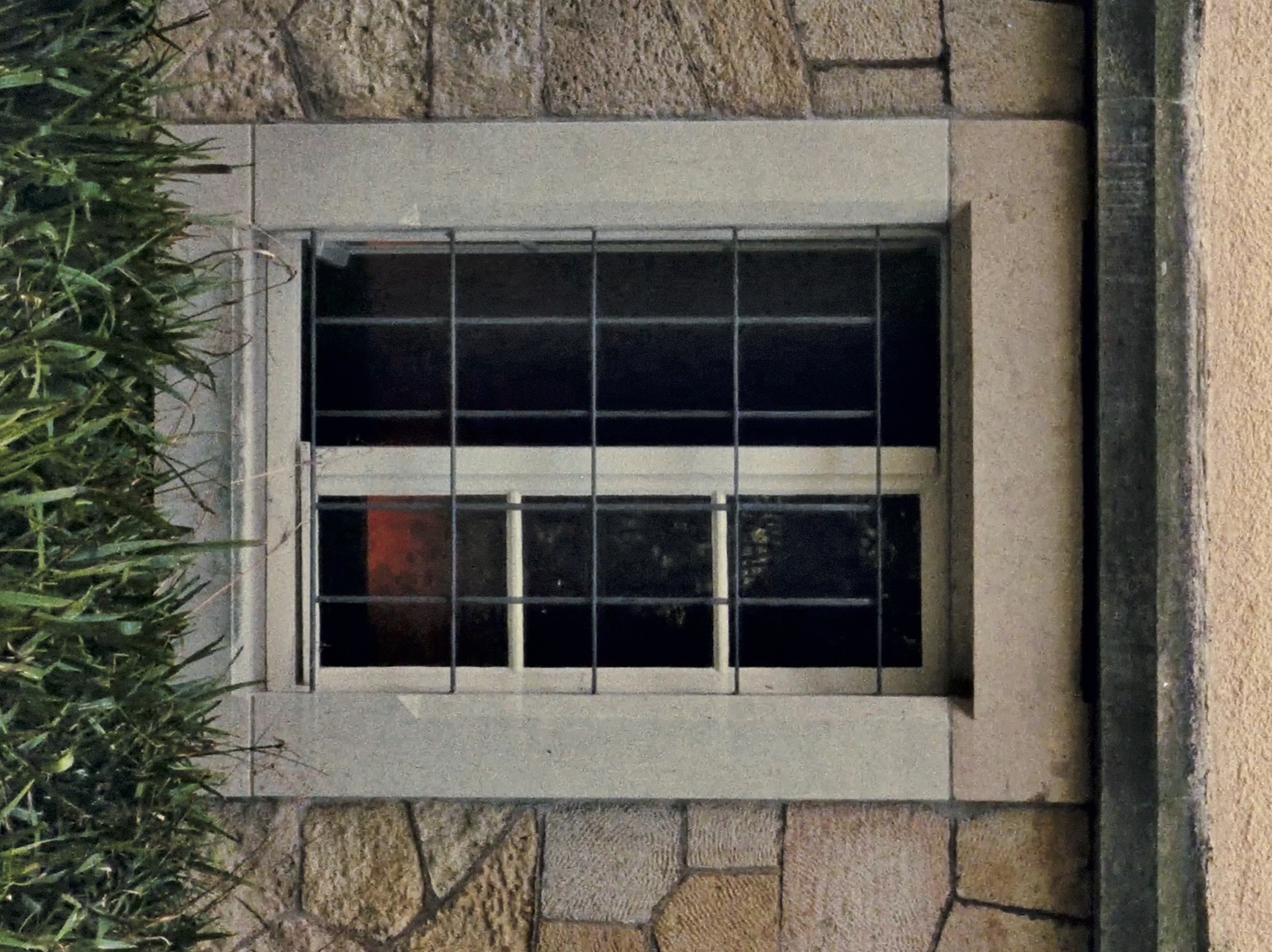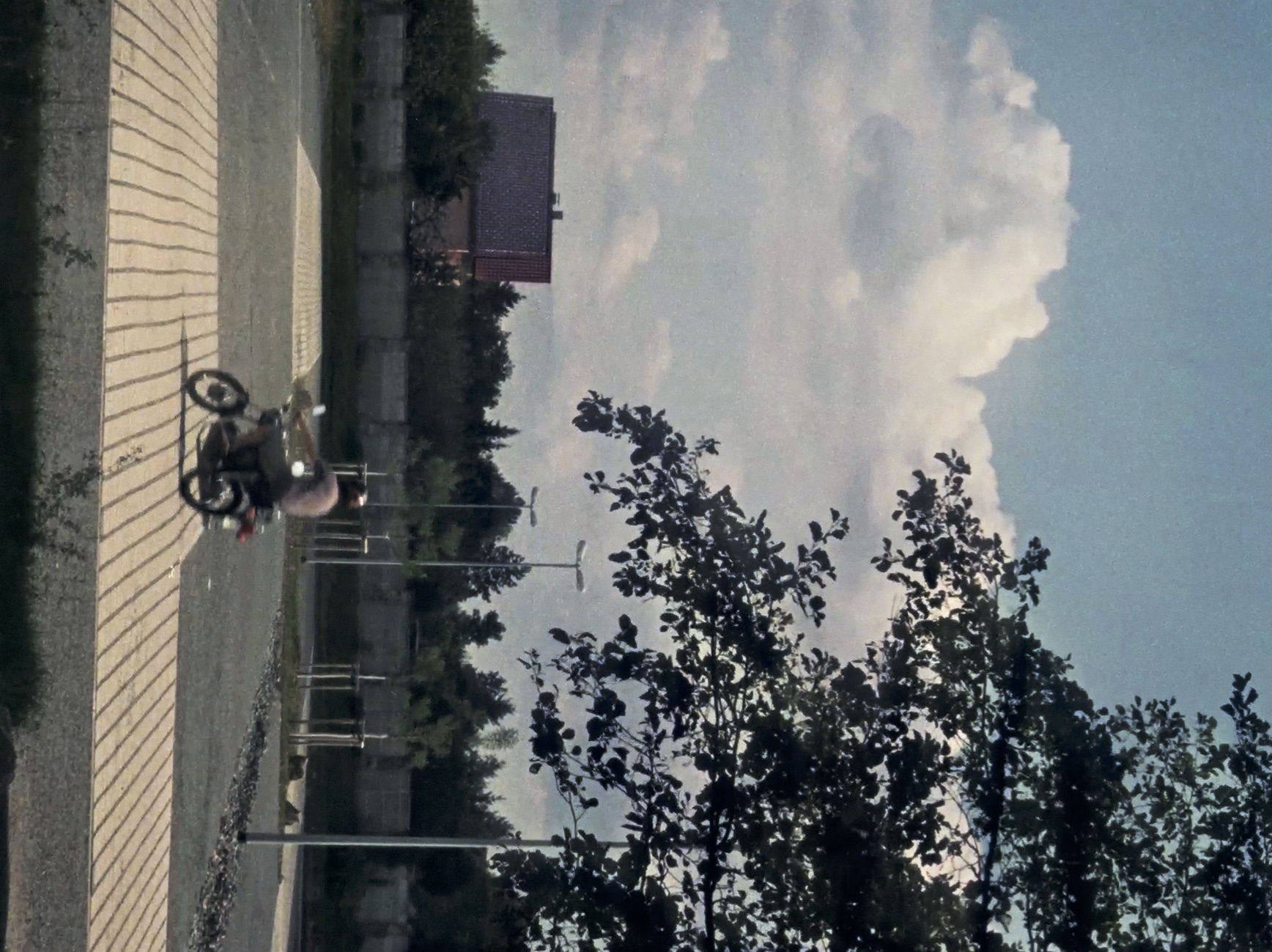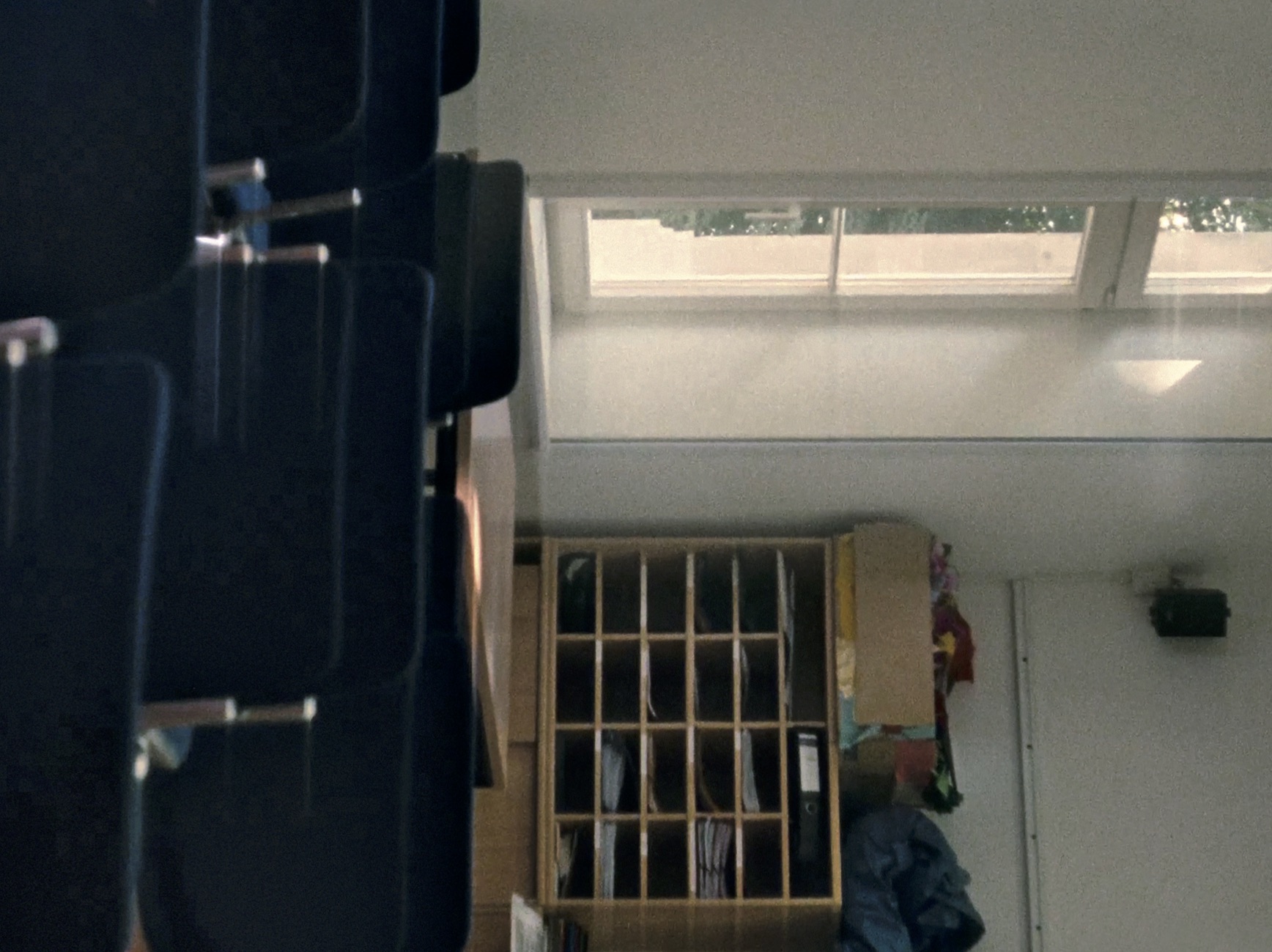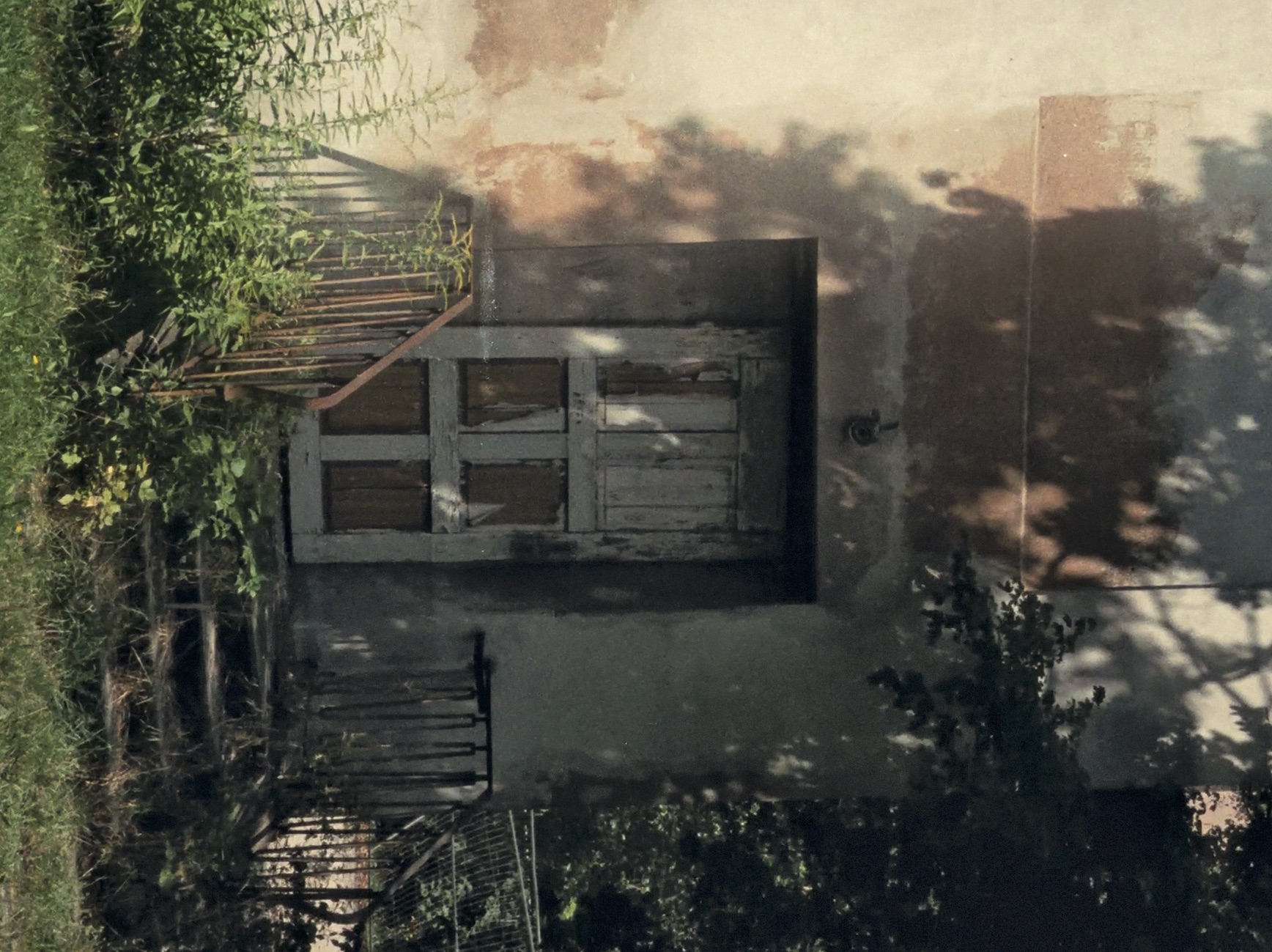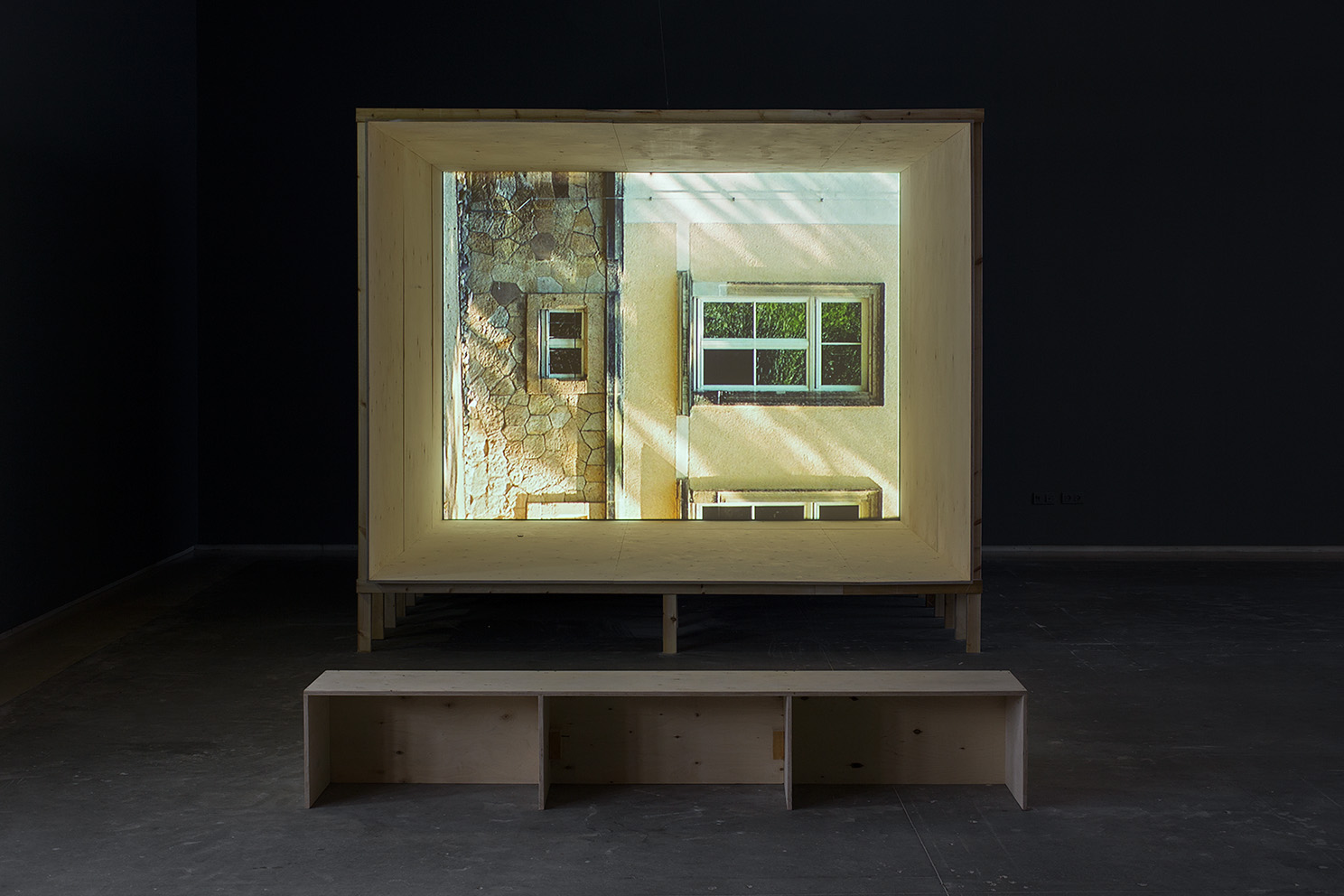Geist und Blut
Geist und Blut
2015, 16mm colour film transferred to HD, Silent, 12 minutes
Geist und Blut is a cinematic study of the Pirna-Sonnestein sanitarium outside Dresden, Germany. The sanitarium housed patients with mental illness in the nineteenth and early twentieth centuries; one patient was Daniel Paul Schreber, son of the respected physician, writer, and pedagogist Daniel Gottlieb Moritz Schreber. Dr. Schreber was the author of a total system of education and behavioral control from birth to adulthood, designed to correct and create healthy, obedient and productive citizens. Daniel Paul’s memoirs written in Pirna-Sonnestein were later used by Sigmund Freud as a basis for this theory of psychoanalysis (see Pangymanstikon for another treatment of this subject). Between 1940 and 1941, the Nazi regime used the building to exterminate 13,720 mostly mentally ill and developmentally challenged people. Today, the building serves as a memorial to those murdered as part of the Nazi campaign.
The film is a slow exploration of the interior and exterior of the building, which is presented as alternatively welcoming and intimidating; well-maintained stone and stucco, decorative elements and verdant landscaping versus high walls, barred windows, and dark corridors. Several times throughout the work, the distortion produced by the end of the film reel creatures a brief rupture. The film’s silence lends a solemn and eerie tone.
Perhaps the most notable feature is that the camera turned 90 degrees, necessitating the viewer to assume a physically uncomfortable position to correct the angle. This deliberate attempt to bring discomfort to the viewer is a subtle reference to the pain created by some of Dr. Schreber’s “corrective” exercises. The works’ title, Geist und Blut (“spirit and blood”), is pulled directly from Schreber’s writings.
- Installation view at ‘Masad’ Solo show at the Tel Aviv Museum of Art, Israel. June 2016


